Nanomaterials Based on Collaboration with Multiple Partners: Zn3Nb2O8 Doped with Eu3+ and/or Amino Substituted Porphyrin Incorporated in Silica Matrices for the Discoloration of Methyl Red
Abstract
1. Introduction
2. Results
2.1. Characterization of Zn3Nb2O8: Non-Doped and Doped with Eu3+ Ions
 values for the entire XRD spectrum was observed. The shifting of the peak is mainly due to the difference in ionic radii between the initial element and the Eu3+ dopant ion, which introduces different parameters in the lattice [52,53].
values for the entire XRD spectrum was observed. The shifting of the peak is mainly due to the difference in ionic radii between the initial element and the Eu3+ dopant ion, which introduces different parameters in the lattice [52,53].2.1.1. Mulliken Analysis of Electron Populations
2.1.2. Scanning Electron Microscopy Analysis of Pseudo-Binary Oxides
2.1.3. Infrared Spectroscopic Characteristics of the Zn3Nb2O8 Nanomaterials
2.1.4. Luminescence Spectra of Pseudo-Binary Oxides: Zn3Nb2O8 and Zn3Nb2O8: 0.5% Eu3+
2.2. UV-Vis Characterization of TAPP Porphyrin, Zn3Nb2O8, and Zn3Nb2O8: 0.5% Eu3+

2.2.1. Theoretical DFT Calculation for Zn3Nb2O8
2.2.2. DFT Analysis of the Crystalline Structure Zn3Nb2O8 in Order to Dope with Eu3+: Interstitial vs. Substitutional Chemical Choice
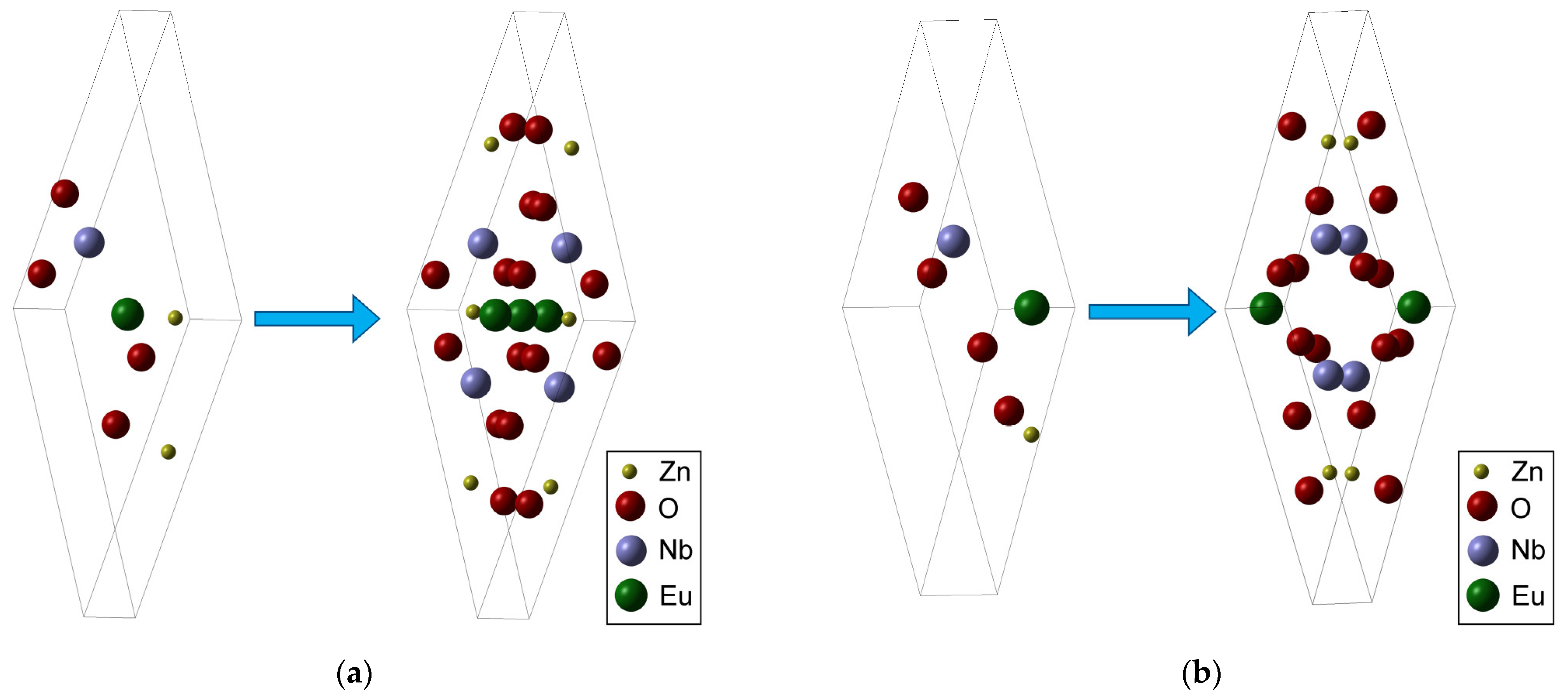
2.3. Characterization of Silica Materials by UV-Vis Spectroscopy
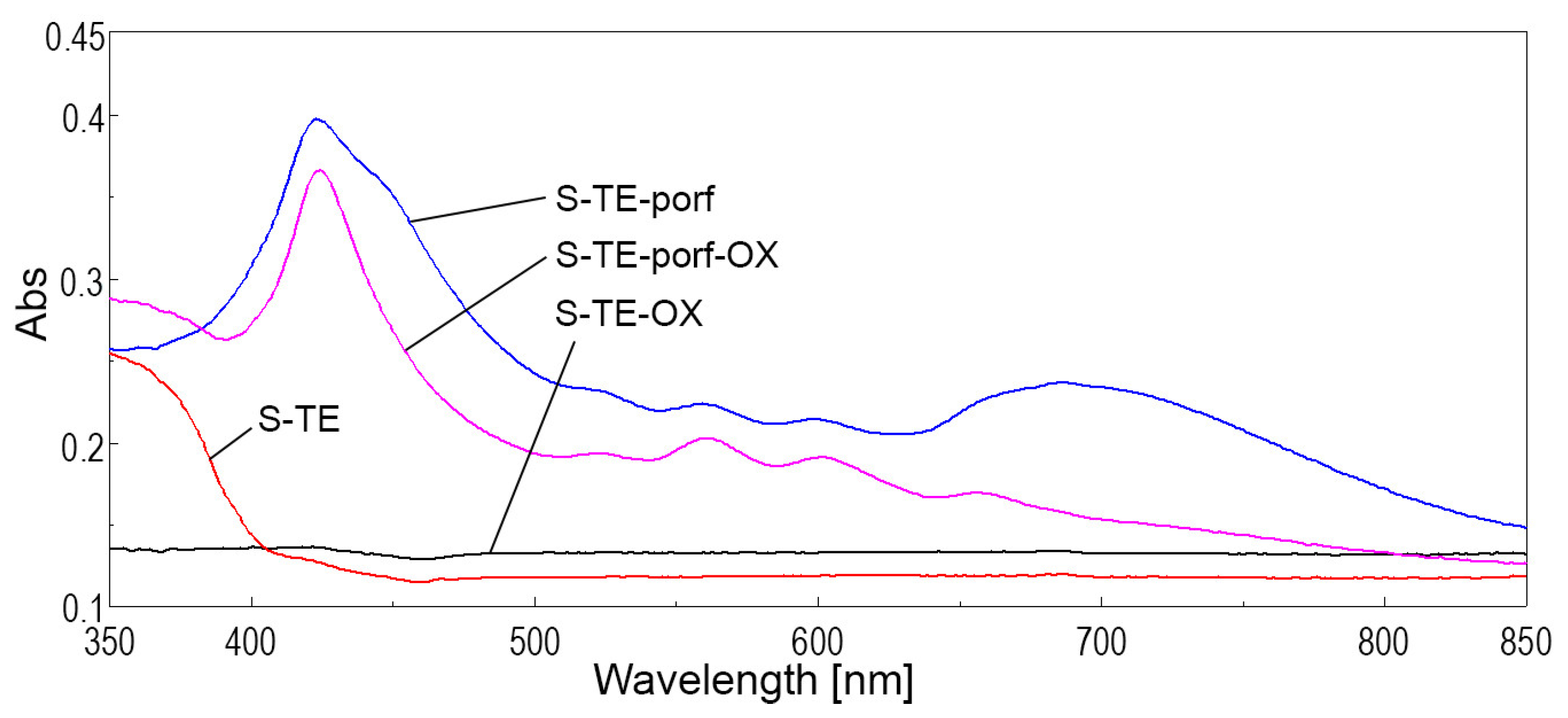
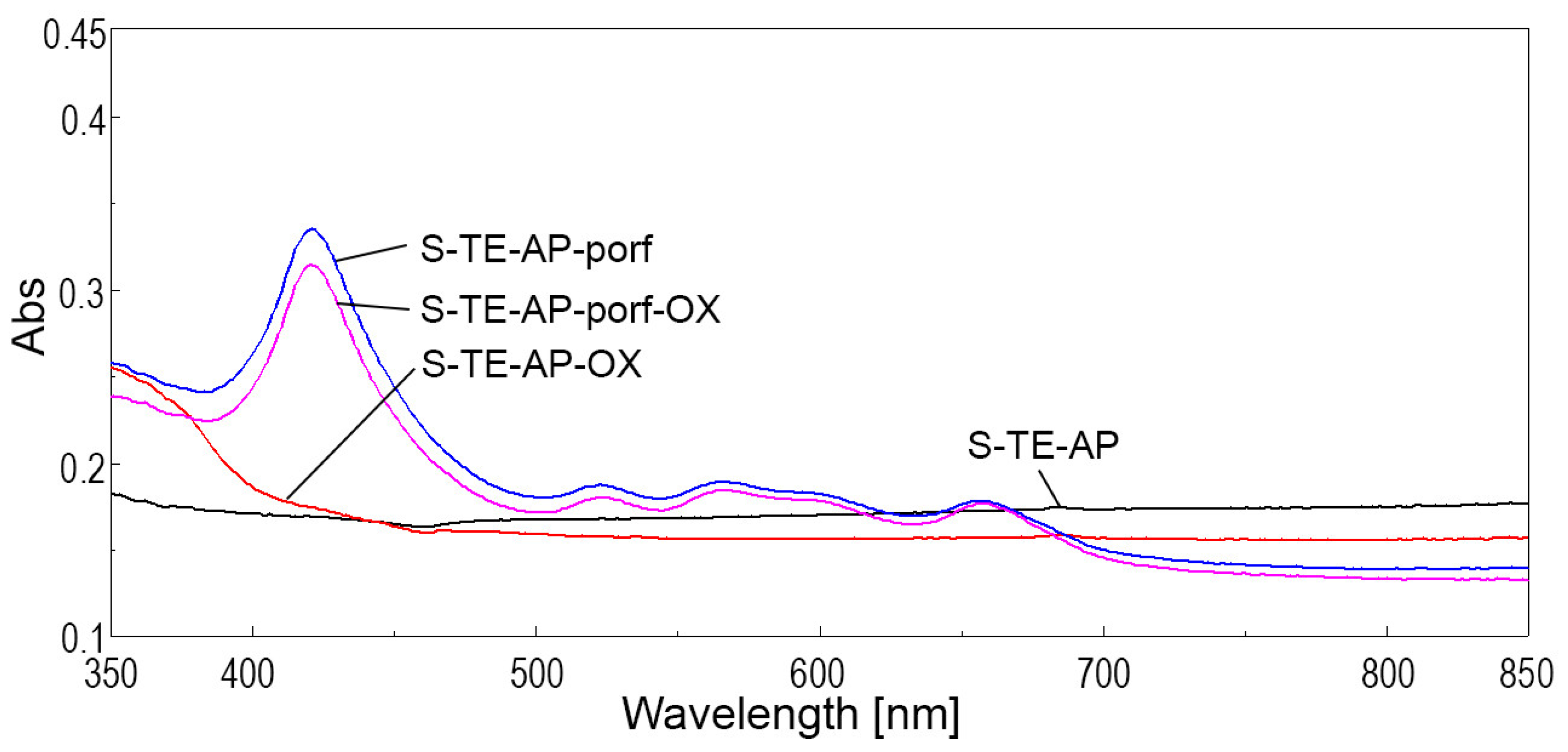
2.4. Characterization of Silica Materials by Fluorescence Spectroscopy
2.5. Methyl Red (MR) Adsorption Investigations Using Hybrid Silica Materials

| Methyl Red Concentration 1 × 10−4 M | Methyl Red Concentration 1 × 10−5M | |||
|---|---|---|---|---|
| Adsorbent Material | qe [mg\g] | R.E. [%] | qe [mg\g] | R.E. [%] |
| S-TE (control) | 1.625 | 60.36 | 0.238 | 88.54 |
| S-TE-OX | 2.308 | 85.69 | 0.247 | 91.59 |
| S-TE-porf | 1.620 | 60.17 | 0.241 | 89.58 |
| S-TE-porf-OX | 2.463 | 91.46 | 0.250 | 92.87 |
| S-TE-AP (control) | 1.005 | 37.33 | 0.228 | 84.79 |
| S-TE-AP-OX | 1.258 | 46.73 | 0.213 | 78.91 |
| S-TE-AP-porf | 1.031 | 38.30 | 0.215 | 79.79 |
| S-TE-AP-porf-OX | 0.918 | 34.09 | 0.218 | 80.93 |

| Methyl Red Concentration 1 × 10−4 M | Methyl Red Concentration 1 × 10−5 M | |||
|---|---|---|---|---|
| Adsorbent Material | qe [mg\g] | R.E. [%] | qe [mg\g] | R.E. [%] |
| S-TE (control) | 0.900 | 66.87 | 0.111 | 82.76 |
| S-TE-OX | 1.169 | 86.78 | 0.128 | 94.82 |
| S-TE-porf | 0.923 | 68.56 | 0.122 | 90.44 |
| S-TE-porf-OX | 1.224 | 90.91 | 0.122 | 90.76 |
| S-TE-AP (control) | 0.998 | 74.14 | 0.122 | 90.57 |
| S-TE-AP-OX | 1.006 | 74.68 | 0.120 | 89.02 |
| S-TE-AP-porf | 0.767 | 56.98 | 0.101 | 74.73 |
| S-TE-AP-porf-OX | 0.749 | 55.62 | 0.110 | 81.97 |

2.5.1. Comparative Atomic Force Microscopy (AFM) Characterization of the Hybrid Silica Materials before and after MR Adsorption
| Before Adsorption of MR | After Adsorption of MR | |||||
|---|---|---|---|---|---|---|
| Sample | Average Roughness (Sa) [nm] | Square Root Roughness (Sq) [nm] | Particle Dimensions [nm] | Average Roughness (Sa) [nm] | Square Root Roughness (Sq) [nm] | Particle Dimensions [nm] |
| S-TE | 29.046 | 35.582 | 83 | 21.768 | 22.295 | 65 |
| S-TE-AP | 30.683 | 38.415 | 98 | 28.036 | 31.475 | 71 |
| S-TE-OX | 5.114 | 8.171 | 12 | 1.016 | 1.985 | 3 |
| S-TE-AP-OX | 9.125 | 12.149 | 28 | 2.697 | 3.485 | 7 |
| S-TE-porf | 25.214 | 29.906 | 75 | 14.992 | 15.337 | 53 |
| S-TE-AP-porf | 26.455 | 32.101 | 80 | 13.4691 | 14.489 | 58 |
| S-TE-porf-OX | 20.640 | 25.183 | 56 | 10.325 | 10.519 | 39 |
| S-TE-AP-porf-OX | 22.341 | 27.021 | 62 | 10.911 | 11.236 | 44 |
2.5.2. BET Analysis
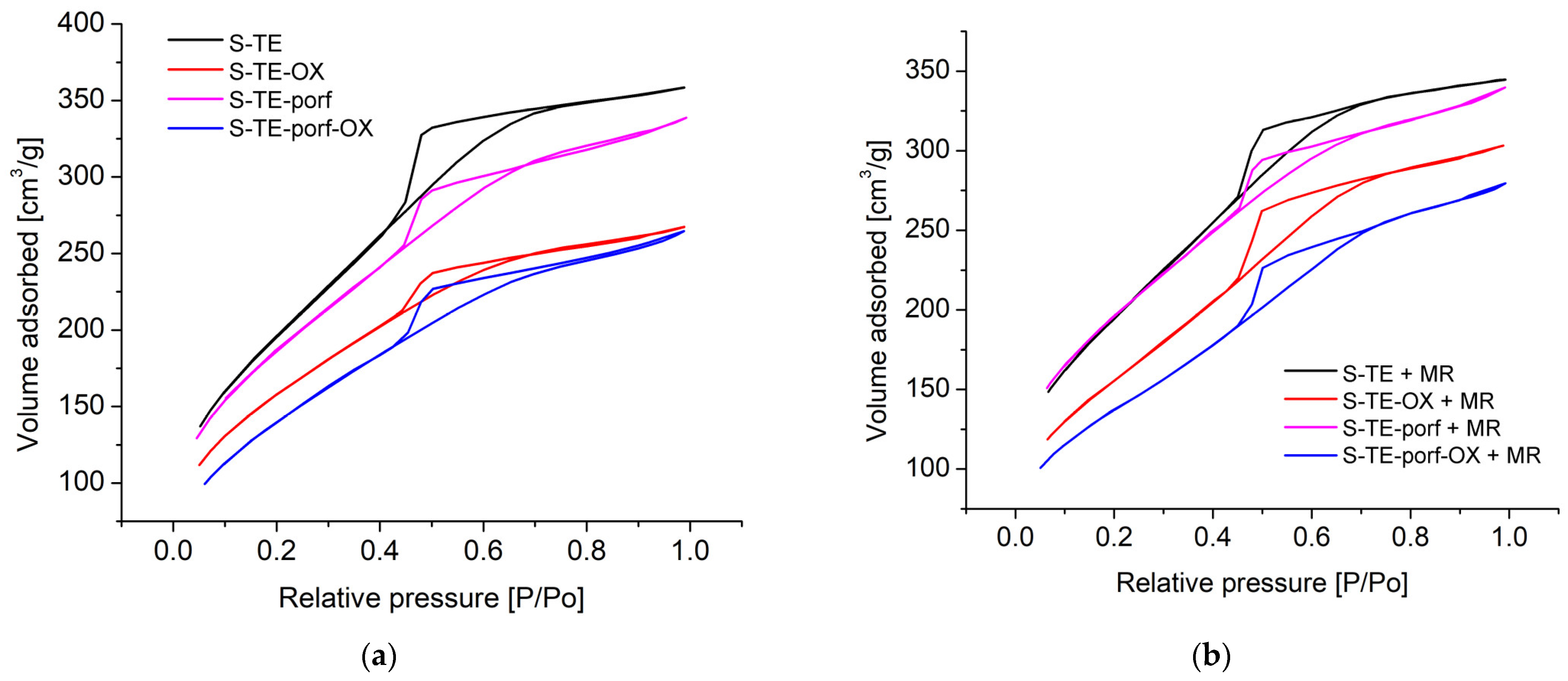
3. Materials and Methods
3.1. Materials and Reagents
3.2. Method for Obtaining Hybrid Silica Nanomaterials Containing Zn3Nb2O8 Doped with Eu3+ and/or Amino-Substituted Porphyrin
3.3. Apparatus
4. Conclusions
Supplementary Materials
Author Contributions
Funding
Institutional Review Board Statement
Informed Consent Statement
Data Availability Statement
Conflicts of Interest
References
- Zahir, M.H.; Rahman, M.M.; Basamad, S.K.S.; Mohaisen, K.O.; Irshad, K.; Rahman, M.M.; Aziz, M.A.; Ali, A.; Hossain, M.M. Preparation of a Sustainable Shape-Stabilized Phase Change Material for Thermal Energy Storage Based on Mg2+-Doped CaCO3/PEG Composites. Nanomaterials 2021, 11, 1639. [Google Scholar] [CrossRef] [PubMed]
- Xue, J.; Noh, H.M.; Choi, B.C.; Park, S.H.; Kim, J.H.; Jeong, J.H.; Du, P. Dual-functional of non-contact thermometry and field emission displays via efficient Bi3+ → Eu3+ energy transfer in emitting-color tunable GdNbO4 phosphors. Chem. Eng. J. 2020, 382, 122861. [Google Scholar] [CrossRef]
- Liang, J.; Devakumar, B.; Sun, L.; Wang, S.; Sun, Q.; Huang, X. Full-visible-spectrum lighting enabled by an excellent cyan-emitting garnet phosphor. J. Mater. Chem. C 2020, 8, 4934–4943. [Google Scholar] [CrossRef]
- Liu, X.; Wu, W.; Cui, D.; Chen, X.; Li, W. Functional Micro-/Nanomaterials for Multiplexed Biodetection. Adv. Mater. 2021, 33, 2004734. [Google Scholar] [CrossRef] [PubMed]
- Narayanan, K.B.; Han, S.S. Helical plant viral nanoparticles—Bioinspired synthesis of nanomaterials and nanostructures. Bioinspir. Biomim. 2017, 12, 031001. [Google Scholar] [CrossRef] [PubMed]
- Kukkar, D.; Vellingiri, K.; Kim, K.-H.; Deep, A. Recent Progress in Biological and Chemical Sensing by Luminescent Metal-Organic Frameworks. Sens. Actuators B Chem. 2018, 273, 1346–1370. [Google Scholar] [CrossRef]
- Hussain, I.; Muhammad, N.; Subhani, Q.; Shou, D.; Jin, M.; Yu, L.; Lu, G.; Wen, X.; Intisar, A.; Yan, Z. A review on structural aspects and applications of PAMAM dendrimers in analytical chemistry: Frontiers from separation sciences to chemical sensor technologies. TrAC Trends Anal. Chem. 2022, 157, 116810. [Google Scholar] [CrossRef]
- Liu, X.; Liu, Y.; Feng, S.; Lu, L. Two luminescent Zn(II) coordination complexes as fluorescence-responsive sensors for efficient detection of Cu2+ ions. J. Mol. Struct. 2023, 1274, 134570. [Google Scholar] [CrossRef]
- Imran, M.; Alam, M.M.; Hussain, S.; Ali, M.A.; Shkir, M.; Mohammad, A.; Ahamad, T.; Kaushik, A.; Irshad, K. Highly photocatalytic active r-GO/Fe3O4 nanocomposites development for enhanced photocatalysis application: A facile low-cost preparation and characterization. Ceram. Int. 2021, 47, 31973–31982. [Google Scholar] [CrossRef]
- Das, L.; Habib, K.; Irshad, K.; Saidur, R.; Algarni, S.; Alqahtani, T. Thermo-Optical Characterization of Therminol55 Based MXene-Al2O3 Hybridized Nanofluid and New Correlations for Thermal Properties. Nanomaterials 2022, 12, 1862. [Google Scholar] [CrossRef]
- Yuan, F.; He, P.; Xi, Z.; Li, X.; Li, Y.; Zhong, H.; Fan, L.; Yang, S. Highly efficient and stable white LEDs based on pure red narrow bandwidth emission triangular carbon quantum dots for wide-color gamut backlight displays. Nano Res. 2019, 12, 1669–1674. [Google Scholar] [CrossRef]
- Dang, P.; Liu, D.; Li, G.; Al Kheraif, A.A.; Lin, J. Recent Advances in Bismuth Ion-Doped Phosphor Materials: Structure Design, Tunable Photoluminescence Properties, and Application in White LEDs. Adv. Opt. Mater. 2020, 8, 1901993. [Google Scholar] [CrossRef]
- Yao, F.; Wang, L.; Lv, Y.; Zhuang, Y.; Zhou, T.-L.; Xie, R.-J. Composition-dependent thermal degradation of red-emitting (Ca1−xSrx)AlSiN3:Eu2+ phosphors for high color rendering white LEDs. J. Mater. Chem. C 2018, 6, 890–898. [Google Scholar] [CrossRef]
- Zhang, Y.; Zhang, Z.; Liu, X.; Shao, G.; Shen, L.; Liu, J.; Xiang, W.; Liang, X. A high quantum efficiency CaAlSiN3:Eu2+ phosphor-in-glass with excellent optical performance for white light-emitting diodes and blue laser diodes. Chem. Eng. J. 2020, 401, 125983. [Google Scholar] [CrossRef]
- Birdeanu, M.; Vaida, M.; Fagadar-Cosma, E. The optical properties of crystalline Zn3Nb2O8 nanomaterials obtained by hydrothermal method. J. Chem. 2015, 2015, 752089. [Google Scholar] [CrossRef]
- Mineiro, S.L.; Gonçalo, D.A.C.; Okamoto, S.; Tenório, P.I.G. Microstructural Analysis of Zinc Niobate Ceramics Processed by Microwave Thermal Treatment. Mater. Sci. Forum 2020, 1012, 185–189. [Google Scholar] [CrossRef]
- Gribchenkova, N.A.; Smirnov, A.S.; Smorchkov, K.G.; Belova, E.V.; Alikhanyan, A.S. Thermodynamic Characteristics of Zinc Niobates Zn3Nb2O8, ZnNb2O6, and Zn2Nb34O87. p–x Diagram of the ZnO–Nb2O5 System. Russ. J. Inorg. Chem. 2021, 66, 1873–1879. [Google Scholar] [CrossRef]
- Bîrdeanu, M.; Bîrdeanu, A.-V.; Gruia, A.S.; Fagadar-Cosma, E.; Avram, C.N. Synthesis and characterization of Zn3Ta2O8 nanomaterials by hydrothermal method. J. Alloy. Compd. 2013, 573, 53–57. [Google Scholar] [CrossRef]
- Bai, P.; Wu, N.; Wang, Y.; Yang, T.; Li, H.; Zhang, J.; Chai, Z.; Wang, X. pH-Controllable regeneration and visible-light photocatalytic redox of carbon and nitrogen co-doped Zn3Nb2O8 towards degradation of multiple contaminants. Catal. Sci. Technol. 2020, 10, 2810–2820. [Google Scholar] [CrossRef]
- Sudhakar, P.; Siva Sesha Reddy, A.; Zhydachevskyy, Y.; Suchocki, A.; Brik, M.G.; Ravi Kumar, V.; Piasecki, M.; Veeraiah, N. Luminescence characteristics of Er3+ ions in ZnO-Ta2O5/Nb2O5/ZrO2-B2O3 glass system- A case study of energy transfer from ZnO to Er3+ ions. Opt. Mater. 2018, 86, 87–94. [Google Scholar] [CrossRef]
- Deepthi Jayan, K.; Sebastian, V. Ab initio DFT determination of structural, mechanical, optoelectronic, thermoelectric and thermodynamic properties of RbGeI3 inorganic perovskite for different exchange-correlation functionals. Mater. Today Commun. 2021, 28, 102650. [Google Scholar] [CrossRef]
- Kheralla, A.; Chetty, N. A review of experimental and computational attempts to remedy stability issues of perovskite solar cells. Heliyon 2021, 7, e06211. [Google Scholar] [CrossRef] [PubMed]
- Idrissi, S.; Labrim, H.; Bahmad, L.; Benyoussef, A. DFT and TDDFT studies of the new inorganic perovskite CsPbI3 for solar cell applications. Chem. Phys. Lett. 2021, 766, 138347. [Google Scholar] [CrossRef]
- Guo, W.; Yang, Z.; Dang, J.; Wang, M. Progress and perspective in Dion-Jacobson phase 2D layered perovskite optoelectronic applications. Nano Energy 2021, 86, 106129. [Google Scholar] [CrossRef]
- Guo, J.; Zhou, H.; Fan, T.; Zhao, B.; Shang, X.; Zhou, T.; He, Y. Improving electrical properties and toughening of PZT-based piezoelectric ceramics for high-power applications via doping rare-earth oxides. J. Mater. Res. Technol. 2020, 9, 14254–14266. [Google Scholar] [CrossRef]
- Ammar, H.Y.; Eid, K.M.; Badran, H.M. TM-doped Mg12O12 nano-cages for hydrogen storage applications: Theoretical study. Results Phys. 2022, 35, 105349. [Google Scholar] [CrossRef]
- Oh, J.A.S.; He, L.; Chua, B.; Zeng, K.; Lu, L. Inorganic Sodium Solid-State Electrolyte and Interface with Sodium Metal for Room-Temperature Metal Solid-State Batteries. Energy Storage Mater. 2020, 34, 28–44. [Google Scholar] [CrossRef]
- Guo, S.-T.; Liu, J.; Qian, W.; Zhu, W.-H.; Zhang, C.-Y. A review of quantum chemical methods for treating energetic molecules. Energetic Mater. Front. 2021, 2, 292–305. [Google Scholar] [CrossRef]
- Birdeanu, M.; Epuran, C.; Fratilescu, I.; Fagadar-Cosma, E. Structured Thin Films Based on Synergistic Effects of MnTa2O6 Oxide and bis-Carboxy-phenyl-substituted Porphyrins, Capable to Inhibit Steel Corrosion. Processes 2021, 9, 1890. [Google Scholar] [CrossRef]
- Birdeanu, M.; Vaida, M.; Bîrdeanu, A.-V.; Fagadar-Cosma, E. Pulsed Laser Deposition deposited layers of pseudo-binary zinc oxides and zinc-porphyrin for steel corrosion inhibition. Corrosion 2020, 76, 734–741. [Google Scholar] [CrossRef]
- Birdeanu, M.; Fagadar-Cosma, G.; Sebarchievici, I.; Bîrdeanu, A.-V.; Taranu, B.; Taranu, I.; Fagadar-Cosma, E. Zn(Ta1–xNbx)2O6 nanomaterials. Synthesis, characterization and corrosion behaviour. J. Serb. Chem. Soc. 2016, 81, 163–175. [Google Scholar] [CrossRef]
- Fagadar-Cosma, E.; Dudás, Z.; Birdeanu, M.; Almásy, L. Hybrid organic—Silica nanomaterials based on novel A3B mixed substituted porphyrin. Mater. Chem. Phys. 2014, 148, 143–152. [Google Scholar] [CrossRef]
- Anghel, D.; Lascu, A.; Epuran, C.; Fratilescu, I.; Ianasi, C.; Birdeanu, M.; Fagadar-Cosma, E. Hybrid Materials Based on Silica Matrices Impregnated with Pt-Porphyrin or PtNPs Destined for CO2 Gas Detection or for Wastewaters Color Removal. Int. J. Mol. Sci. 2020, 21, 4262. [Google Scholar] [CrossRef]
- Fratilescu, I.; Dudás, Z.; Birdeanu, M.; Epuran, C.; Anghel, D.; Fringu, I.; Lascu, A.; Len, A.; Fagadar-Cosma, E. Hybrid Silica Materials Applied for Fuchsine B Color Removal from Wastewaters. Nanomaterials. 2021, 11, 863. [Google Scholar] [CrossRef] [PubMed]
- Fratilescu, I.; Fagadar-Cosma, E. Recovery of Waste Industrial Waters Containing Red Congo by Multifunctionalized Mesoporous Silica Nanomaterials. Chem. Proc. 2022, 7, 19. [Google Scholar] [CrossRef]
- Takkar, S.; Tyagi, B.; Kumar, N.; Kumari, T.; Iqbal, K.; Varma, A.; Thakur, I.S.; Mishra, A. Biodegradation of methyl red dye by a novel actinobacterium Zhihengliuella sp. ISTPL4: Kinetic studies, isotherm and biodegradation pathway. Environ. Technol. Innov. 2022, 26, 102348. [Google Scholar] [CrossRef]
- Patil, N.P.; Bholay, A.D.; Kapadnis, B.P.; Gaikwad, V.B. Biodegradation of model azo dye methyl red and other textile dyes by isolate Bacillus circulans npp1. J. Pure Appl. Microbiol. 2016, 10, 2793–2800. [Google Scholar] [CrossRef]
- Chairunisa, W.; Imawan, C. The effect of pH on the characteristics of the methyl red solution as a gamma-ray dosimeter. J. Phys. Conf. Ser. 2019, 1321, 022015. [Google Scholar] [CrossRef]
- Wu, P.-C.; Hou, C.-T.; Hsiao, Y.-C.; Lee, W. Influence of methyl red as a dopant on the electrical properties and device performance of liquid crystals. Opt. Express 2014, 22, 31347–31355. [Google Scholar] [CrossRef]
- Irfan, M.H.; Bahrizal, S.H.; Aini, S. Degradation of Methyl Red Using a Mixture of Iron Oxide In Silica Mesoporous. Int. J. Sci. Res. Eng. Dev. 2019, 2, 597–600. [Google Scholar]
- Mnif, I.; Fendri, R.; Ghribi, D. Decolorization of methyl red using Bacillus thuringiensis RI16 strain: Enhanced bacterial treatment by SPB1 biosurfactant addition. Water Pract. Technol. 2022, 17, 2570–2580. [Google Scholar] [CrossRef]
- Ikram, M.; Naeem, M.; Zahoor, M.; Rahim, A.; Hanafiah, M.M.; Oyekanmi, A.A.; Shah, A.B.; Mahnashi, M.H.; Al Ali, A.; Jalal, N.A.; et al. Biodegradation of Azo Dye Methyl Red by Pseudomonas aeruginosa: Optimization of Process Conditions. Int. J. Environ. Res. Public Health 2022, 19, 9962. [Google Scholar] [CrossRef] [PubMed]
- Gul, S.; Kanwal, M.; Qazi, R.A.; Gul, H.; Khattak, R.; Khan, M.S.; Khitab, F.; Krauklis, A.E. Efficient Removal of Methyl Red Dye by Using Bark of Hopbush. Water 2022, 14, 2831. [Google Scholar] [CrossRef]
- Adusei, J.K.; Agorku, E.S.; Voegborlo, R.B.; Ampong, F.K.; Danu, B.Y.; Amarh, F.A. Removal of Methyl red in aqueous systems using synthesized NaAlg-g-CHIT/nZVI adsorbent. Sci. Afr. 2022, 17, e01273. [Google Scholar] [CrossRef]
- Kim, H.; Purev, O.; Myung, E.; Choi, N.; Cho, K. Removal of Methyl Red from Aqueous Solution Using Polyethyleneimine Crosslinked Alginate Beads with Waste Foundry Dust as a Magnetic Material. Int. J. Environ. Res. Public Health 2022, 19, 9030. [Google Scholar] [CrossRef]
- Tay, W.Y.; Ng, L.Y.; Ng, C.Y.; Sim, L.C. Removal of Methyl Red using Adsorbent Produced from Empty Fruit Bunches by Taguchi Approach. IOP Conf. Ser. Earth Environ. Sci. 2021, 945, 012014. [Google Scholar] [CrossRef]
- Dey, A.K.; Dey, A.; Goswami, R. Adsorption characteristics of methyl red dye by Na2CO3-treated jute fibre using multi-criteria decision making approach. Appl. Water Sci. 2022, 12, 179. [Google Scholar] [CrossRef]
- Dawadi, K.B.; Bhattarai, M.; Homagai, P.L. Adsorptive Removal of Methyl Red from Aqueous Solution using Charred and Xanthated Sal (Shorea robusta) Sawdust. Amrit Res. J. 2020, 1, 37–44. [Google Scholar] [CrossRef]
- Zaman, S.; Mehrab, N.; Islam, S.; Ghosh, G.C.; Chakraborty, T.K. Hen feather: A bio-waste material for adsorptive removal of methyl red dye from aqueous solutions. H2Open J. 2021, 4, 291–301. [Google Scholar] [CrossRef]
- Zhao, Y.; Zhang, P. Influence of Ta substitution for Nb in Zn3Nb2O8 and the impact on the crystal structure and microwave dielectric properties. Dalton Trans. 2016, 45, 11807–11816. [Google Scholar] [CrossRef]
- Ali Hakami, N.; Hosni Mahmoud, H.A. Deep Learning Classification of Crystal Structures Utilizing Wyckoff Positions. Crystals 2022, 12, 1460. [Google Scholar] [CrossRef]
- Li, Y.; Xu, S. The contribution of Eu3+ doping concentration on the modulation of morphology and luminescence properties of InVO4:Eu3+. RSC Adv. 2018, 8, 31905–31910. [Google Scholar] [CrossRef] [PubMed]
- Tang, Q.; Yang, T.; Guo, B.; Peng, B.; Huang, H.; Ao, J. Synthesis and photoluminescence properties of Eu3+ doped Sr5Nb4O15 red-emitting phosphors for white LEDs. Optik 2020, 224, 165770. [Google Scholar] [CrossRef]
- Cossard, A.; Desmarais, J.K.; Casassa, S.; Gatti, C.; Erba, A. Charge Density Analysis of Actinide Compounds from the Quantum Theory of Atoms in Molecules and Crystals. J. Phys. Chem. Lett. 2021, 12, 1862–1868. [Google Scholar] [CrossRef]
- Desmarais, J.K.; Flament, J.-P.; Erba, A. Adiabatic connection in spin-current density functional theory. Phys. Rev. B 2020, 102, 235118. [Google Scholar] [CrossRef]
- Desmarais, J.K.; Erba, A.; Dovesi, R. Generalization of the periodic LCAO approach in the CRYSTAL code to g-type orbitals. Theor. Chem. Acc. 2018, 137, 28. [Google Scholar] [CrossRef]
- Elgengehi, S.M.; El-Taher, S.; Ibrahim, M.A.A.; Desmarais, J.K.; El-Kelany, K.E. Graphene and graphene oxide as adsorbents for cadmium and lead heavy metals: A theoretical investigation. Appl. Surf. Sci. 2020, 507, 145038. [Google Scholar] [CrossRef]
- Dovesi, R.; Orlando, R.; Erba, A.; Zicovich-Wilson, C.M.; Civalleri, B.; Casassa, S.; Maschio, L.; Ferrabone, M.; De La Pierre, M.; D’Arco, P.; et al. CRYSTAL14: A program for the ab initio investigation of crystalline solids. Int. J. Quantum Chem. 2014, 114, 1287–1317. [Google Scholar] [CrossRef]
- Segall, M.D.; Shah, R.; Pickard, C.J.; Payne, M.C. Population analysis of plane-wave electronic structure calculations of bulk materials. Phys. Rev. B 1996, 54, 16317. [Google Scholar] [CrossRef]
- Shou, H.-W.; Xie, R.-Y.; Peng, M.-J.; Duan, Y.-H.; Sun, Y. Stability and electronic structures of the Ti-Zn intermetallic compounds: A DFT calculation. Phys. B Condens. Matter 2019, 560, 41–45. [Google Scholar] [CrossRef]
- Levine, I.N. Chapter 15: Ab Initio and Density-Functional Treatments of Molecules. In Quantum Chemistry, 5th ed.; Prentice Hall: Hoboken, NJ, USA, 2009; pp. 480–592. [Google Scholar]
- Dovesi, R.; Civalleri, B.; Roetti, C.; Saunders, V.R.; Orlando, R. Chapter 1: Ab Initio Quantum Simulation in Solid State Chemistry. In Reviews in Computational Chemistry; Lipkowitz, K.B., Larter, R., Cundari, T.R., Eds.; Wiley: Hoboken, NJ, USA, 2005; Volume 21. [Google Scholar] [CrossRef]
- Evarestov, R.A. Quantum Chemistry of Solids The LCAO First Principles Treatment of Crystals; Cardona, M., Fulde, P., von Klitzing, K., Queisser, H.-J., Merlin, R., Stormer, H., Eds.; Springer: Berlin/Heidelberg, Germany, 2007; pp. 105–140. [Google Scholar]
- Luo, W.; Li, L.; Zhang, B.; Qiao, J. The mechanism of microwave response in layer-cofired Zn3Nb2O8–TiO2–Zn3Nb2O8 ceramic architecture. J. Alloy. Compd. 2020, 824, 153978. [Google Scholar] [CrossRef]
- Jayarambabu, N.; Siva Kumari, B.; Venkateswara Rao, K.; Prabhu, Y.T. Germination and Growth Characteristics of Mungbean Seeds (Vigna radiata L.) affected by Synthesized Zinc Oxide Nanoparticles. Int. J. Curr. Eng. Technol. 2014, 4, 3411–3416. [Google Scholar]
- Patel, M.; Mishra, S.; Verma, R.; Shikha, D. Synthesis of ZnO and CuO nanoparticles via Sol gel method and its characterization by using various technique. Discov. Mater. 2022, 2, 1. [Google Scholar] [CrossRef]
- Birdeanu, M.; Sebarchievici, I.; Bîrdeanu, A.-V.; Ţăranu, B.; Peter, F.; Fagadar-Cosma, E. Synthesis, characterization and potential application of Zn3(Ta1-xNbx)2O8 oxides. Dig. J. Nanomater. Biostructures 2015, 10, 543–555. [Google Scholar]
- Ristić, M.; Popović, S.; Musić, S. Sol–gel synthesis and characterization of Nb2O5 powders. Mater. Lett. 2004, 58, 2658–2663. [Google Scholar] [CrossRef]
- Nagaraju, P.; Vasudevan, R.; Alsalme, A.; Alghamdi, A.; Arivanandhan, M.; Jayavel, R. Surfactant-Free Synthesis of Nb2O5 Nanoparticles Anchored Graphene Nanocomposites with Enhanced Electrochemical Performance for Supercapacitor Electrodes. Nanomaterials 2020, 10, 160. [Google Scholar] [CrossRef]
- Lima Valerio, T.; Rodrigues Maia, G.A.; Gonçalves, L.F.; Viomar, A.; do Prado Banczek, E.; Pinto Rodrigues, P.R. Study of the Nb2O5 Insertion in ZnO to Dye-sensitized Solar Cells. Mater. Res. 2019, 22 (Suppl. 1), e20180864. [Google Scholar] [CrossRef]
- Binnemans, K. Interpretation of europium(III) spectra. Coord. Chem. Rev. 2015, 295, 1–45. [Google Scholar] [CrossRef]
- Ribeiro de Mesquita, B.; Couto dos Santos, M.A. Spectroscopic study of the Eu3+ local symmetry in EuF3 crystal. J. Fluor. Chem. 2021, 243, 109730. [Google Scholar] [CrossRef]
- Samanta, S.; Soni Reddy, P.; Mandal, K. Field Asymmetry Ratio: A new quantitative parameter to select microstrip antenna geometries for low cross-polarization application. AEU Int. J. Electron. Commun. 2021, 128, 153519. [Google Scholar] [CrossRef]
- Porcher, P.; Caro, P. Influence of J-mixing on the phenomenological interpretation of the Eu3+ ion spectroscopic properties. J. Lumin. 1980, 21, 207–216. [Google Scholar] [CrossRef]
- Gedam, S.C.; Dhoble, S.J.; Pode, R.B. 5D0→7F1 and 5D0→7F2 transition in europium doped halosulphates for mercury-free lamps. J. Lumin. 2012, 132, 2693–2696. [Google Scholar] [CrossRef]
- Albani, J.R. Chapter 3: Fluorophores: Descriptions and Properties. In Structure and Dynamics of Macromolecules: Absorption and Fluorescence Studies, 1st ed.; Elsevier: Amsterdam, The Netherlands, 2004; pp. 99–140. [Google Scholar] [CrossRef]
- Kumar, A.; Manam, J. Thermally stable Na2ZrO3: Eu3+ phosphors for UV excited tricolor white LEDs. Mater. Today Proc. 2020, 46, 6107–6112. [Google Scholar] [CrossRef]
- Zhao, W.; Wen, H.; Fan, B.; Li, H. Novel multicolor-tunable phosphor Ba3B6Si2O16: Tb3+, Eu3+—Luminescent properties and energy transfer for near-UV white LEDs. J. Solid State Chem. 2020, 288, 121403. [Google Scholar] [CrossRef]
- Noh, T.H.; Cho, I.-S.; Lee, S.; Kim, D.W.; Park, S.; Seo, S.W.; Lee, C.W.; Hong, K.S. Photophysical and Photocatalytic Properties of Zn3M2O8 (M=Nb,Ta). J. Am. Ceram. Soc. 2011, 95, 227–231. [Google Scholar] [CrossRef]
- Carbonaro, C.M.; Corpino, R.; Ricci, P.C.; Chiriu, D. On the Origin of Blue and UV Emission Bands in Mesoporous Silica. AIP Conf. Proc. 2014, 15, 15–22. [Google Scholar] [CrossRef]
- Anedda, A.; Carbonaro, C.M.; Clemente, F.; Corpino, R.; Ricci, P.C. Low temperature investigation of the blue emission in mesoporous silica. Mater. Sci. Eng. C 2005, 25, 631–634. [Google Scholar] [CrossRef]
- Rabouw, F.T.; Cogan, N.M.B.; Berends, A.C.; van der Stam, W.; Vanmaekelbergh, D.; Koenderink, A.F.; Krauss, T.D.; de Mello Donega, C. Non-blinking single-photon emitters in silica. Sci. Rep. 2016, 6, 21187. [Google Scholar] [CrossRef]
- Făgădar-Cosma, E.; Făgădar-Cosma, G.; Vasile, M.; Enache, C. Synthesis, spectroscopic and self-assembling characterization of novel photoactive mixed aryl-substituted porphyrin. Curr. Org. Chem. 2012, 16, 931–941. [Google Scholar] [CrossRef]
- Mak, C.A.; Pericas, M.A.; Fagadar-Cosma, E. Functionalization of A3B-type porphyrin with Fe3O4 MNPs. Supramolecular assemblies, gas sensor and catalytic applications. Catal. Today 2018, 306, 268–275. [Google Scholar] [CrossRef]
- Iwaki, M.; Takahashi, H.; Uematsu, K.; Toda, K.; Sato, M. Emission color shift from green yellow to reddish orange in Eu2+-activated Ca6BaP4O17 by doping high amount of activator ion. J. Lumin. 2022, 246, 118810. [Google Scholar] [CrossRef]
- Quiroz-Segoviano, R.I.Y.; Serratos, I.N.; Rojas-González, F.; Tello-Solís, S.R.; Sosa-Fonseca, R.; Medina-Juárez, O.; Menchaca-Campos, C.; García-Sánchez, M.A. On Tuning the Fluorescence Emission of Porphyrin Free Bases Bonded to the Pore Walls of Organo-Modified Silica. Molecules 2014, 19, 2261–2285. [Google Scholar] [CrossRef] [PubMed]
- Venkatramaiah, N.; Ramakrishna, B.; Kumar, A.R.; Veeraiah, N.; Venkatesan, R. Enhanced stokes shift of S2→S0 emission and structural investigations of Sn(IV)Porphyrins doped hybrid borate glasses. J. Alloy. Compd. 2012, 513, 318–323. [Google Scholar] [CrossRef]
- Kelm, A.; Ostapko, J.; Gajewska, A.; Sánchez-Iglesias, A.; Waluk, J. Spectral and photophysical modifications of porphyrins attached to core–shell nanoparticles. Theory and experiment. Methods Appl. Fluoresc. 2021, 9, 045003. [Google Scholar] [CrossRef]
- Ishihara, S.; Labuta, J.; Van Rossom, W.; Ishikawa, D.; Minami, K.; Hill, J.P.; Ariga, K. Porphyrin-based sensor nanoarchitectonics in diverse physical detection modes. Phys. Chem. Chem. Phys. 2014, 16, 9713–9746. [Google Scholar] [CrossRef]
- Albani, J.R. Chapter 2: Fluorescence: Principles and Observables. In Structure and Dynamics of Macromolecules: Absorption and Fluorescence Studies, 1st ed.; Elsevier: Amsterdam, The Netherlands, 2004; pp. 55–98. [Google Scholar] [CrossRef]
- Kapaklis, V.; Poulopoulos, P.; Karoutsos, V.; Manouras, T.; Politis, C. Growth of thin Ag films produced by radio frequency magnetron sputtering. Thin Solid Films 2006, 510, 138–142. [Google Scholar] [CrossRef]
- Thommes, M.; Kaneko, K.; Neimark, A.V.; Olivier, J.P.; Rodriguez-Reinoso, F.; Rouquerol, J.; Sing, K.S.W. Physisorption of gases, with special reference to the evaluation of surface area and pore size distribution (IUPAC Technical Report). Pure Appl. Chem. 2015, 87, 1051–1069. [Google Scholar] [CrossRef]
- Chen, K.; Zhang, T.; Chen, X.; He, Y.; Liang, X. Model construction of micro-pores in shale: A case study of Silurian Longmaxi Formation shale in Dianqianbei area, SW China. Pet. Explor. Dev. 2018, 45, 412–421. [Google Scholar] [CrossRef]
- Birdeanu, M.; Epuran, C.; Fratilescu, I.; Fagadar-Cosma, E. Structured composites between MnTa2O6 and porphyrins: Influence of the number of carboxylic groups grafted on porphyrins on the capacity to inhibit corrosion of steel. Indian J. Chem. Technol. 2022, 29, 354–366. [Google Scholar] [CrossRef]
- Lőrinczi, A.; Fagadar-Cosma, E.; Socol, G.; Mihăilescu, A.; Matei, E.; Sava, F.; Ştefan, M. SnSe2-Zn-Porphyrin Nanocomposite Thin Films for Threshold Methane Concentration Detection at Room Temperature. Chemosensors 2020, 8, 134. [Google Scholar] [CrossRef]
- Fagadar-Cosma, E.; Enache, C.; Armeanu, I.; Dascalu, D.; Fagadar-Cosma, G.; Vasile, M.; Grozescu, I. The influence of pH over topography and spectroscopic properties of silica hybrid materials embedding meso-tetratolylporphyrin. Mater. Res. Bull. 2009, 44, 426–431. [Google Scholar] [CrossRef]
- Pomonis, P.J.; Tsaousi, E.T. Frenkel−Halsey−Hill Equation, Dimensionality of Adsorption, and Pore Anisotropy. Langmuir 2009, 25, 9986–9994. [Google Scholar] [CrossRef] [PubMed]
- Dudas, Z.; Enache, C.; Fagadar-Cosma, G.; Armeanu, I.; Fagadar-Cosma, E. Hybrid silica-porphyrin materials with tailored pore sizes. Mater. Res. Bull. 2010, 45, 1150–1156. [Google Scholar] [CrossRef]
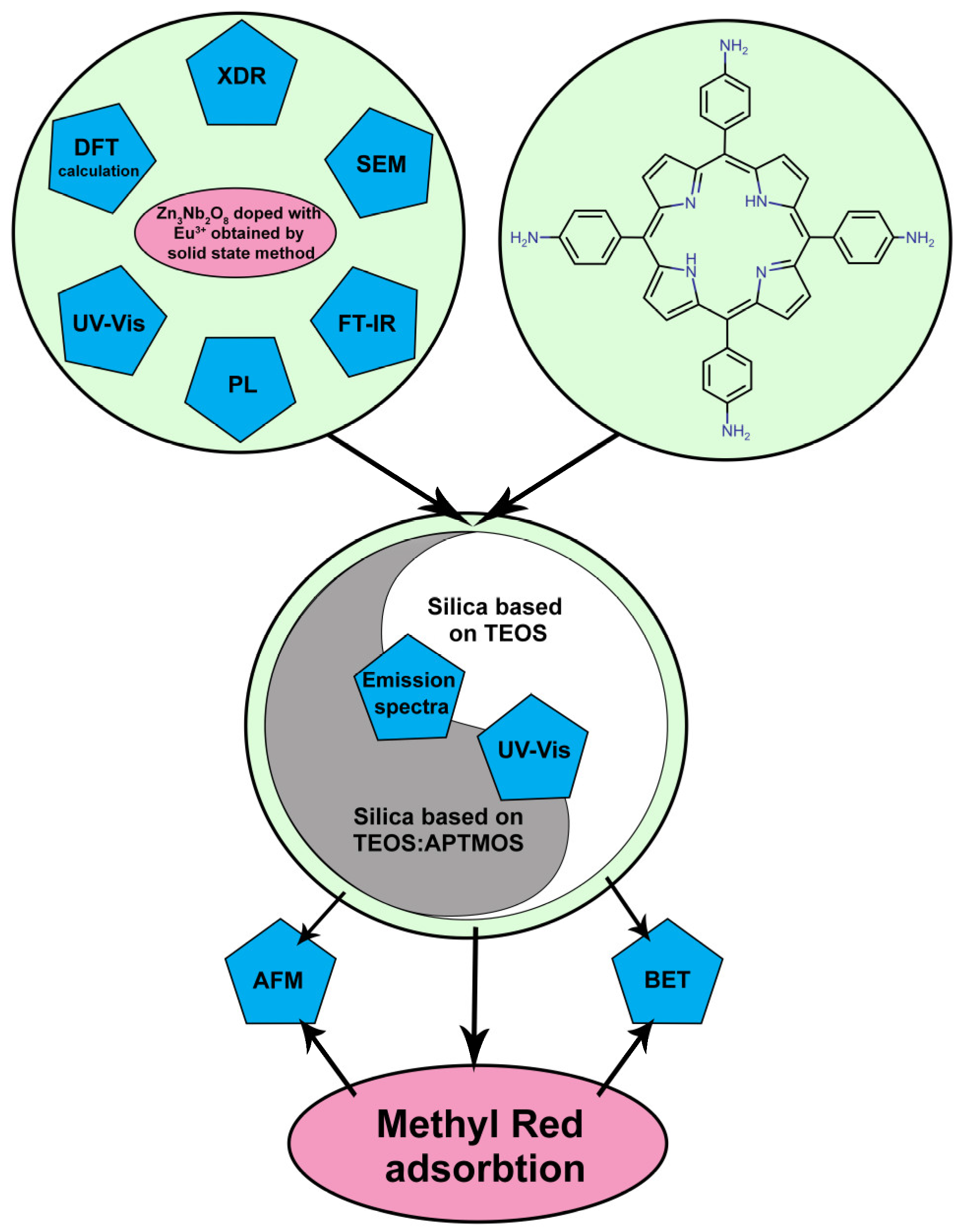
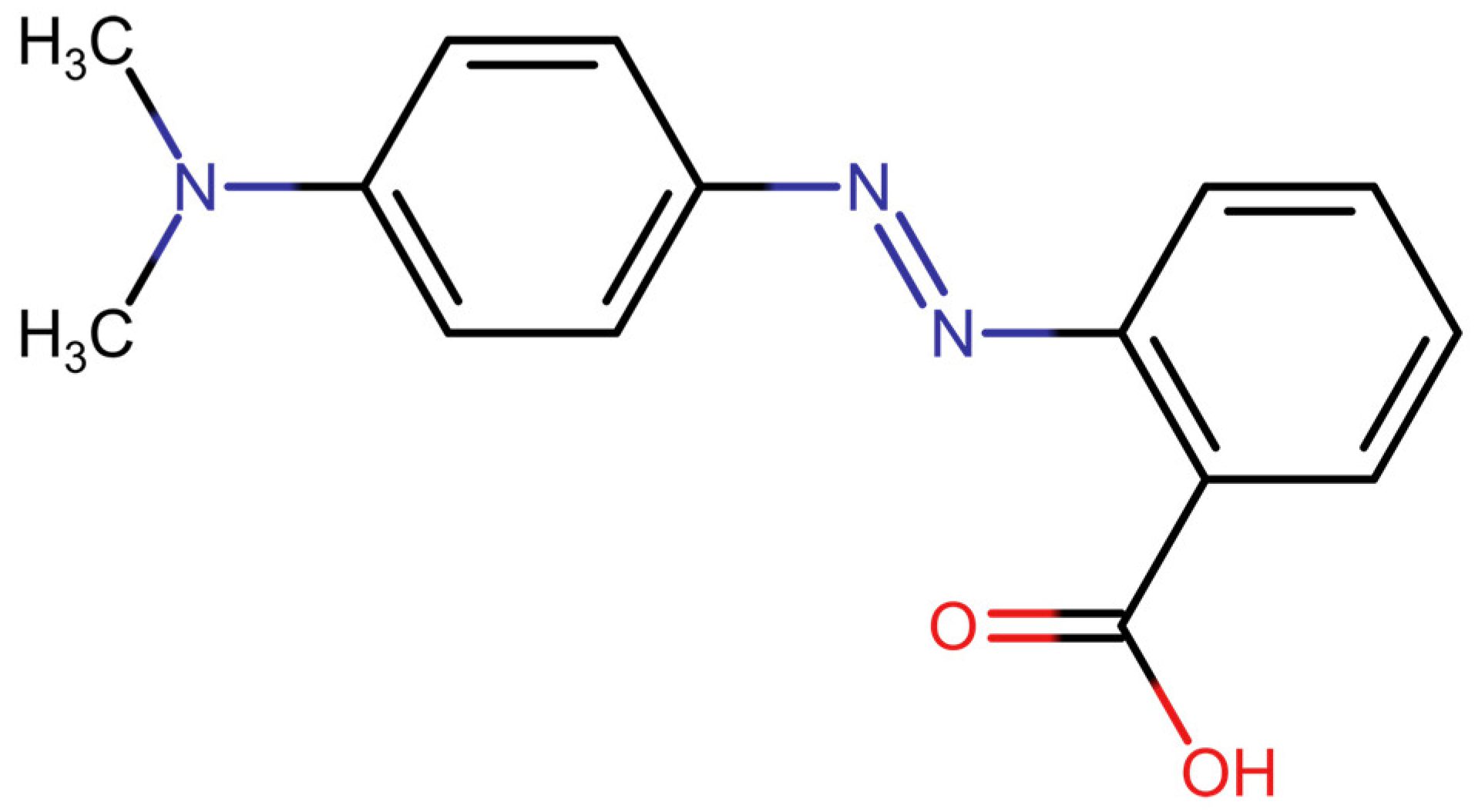
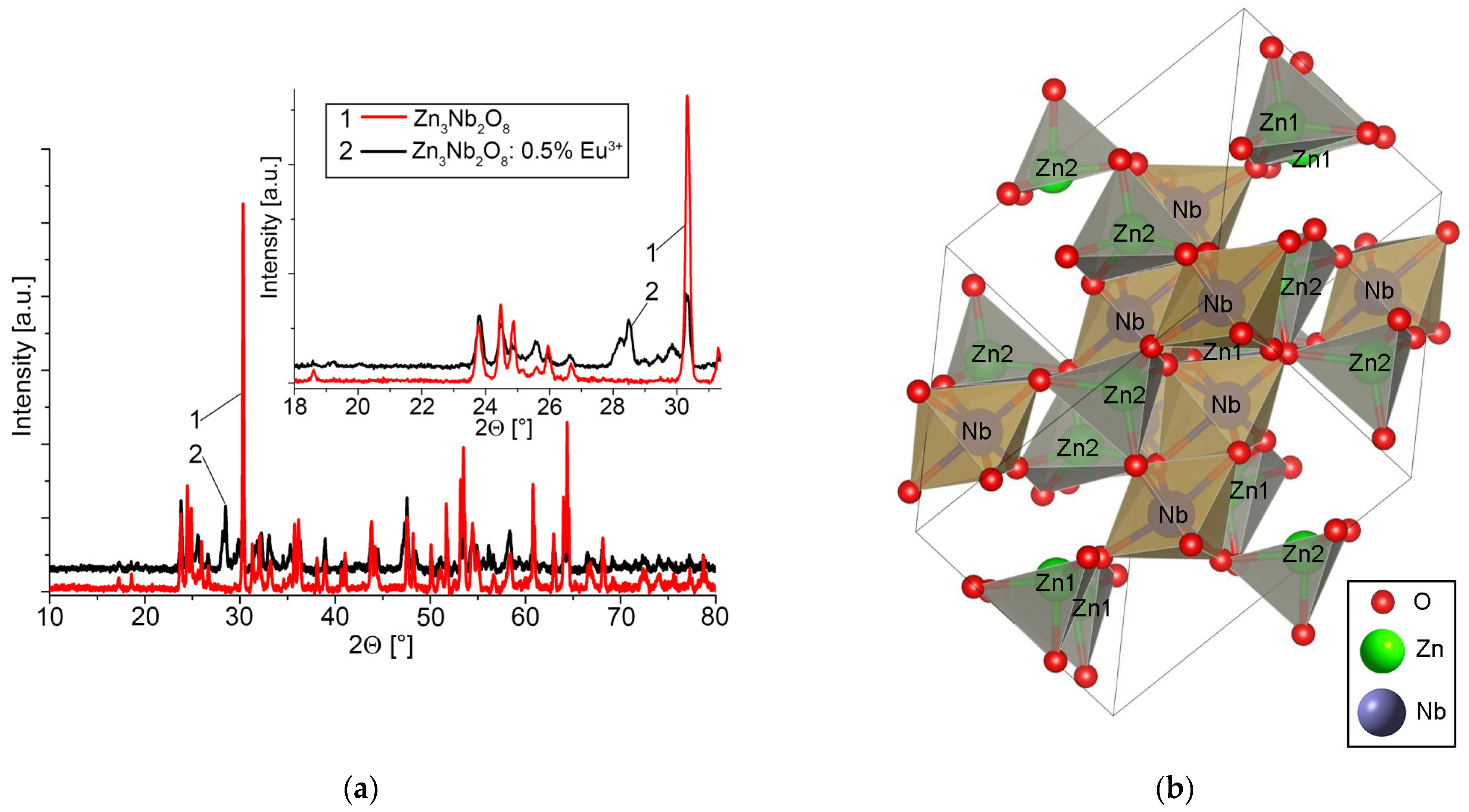
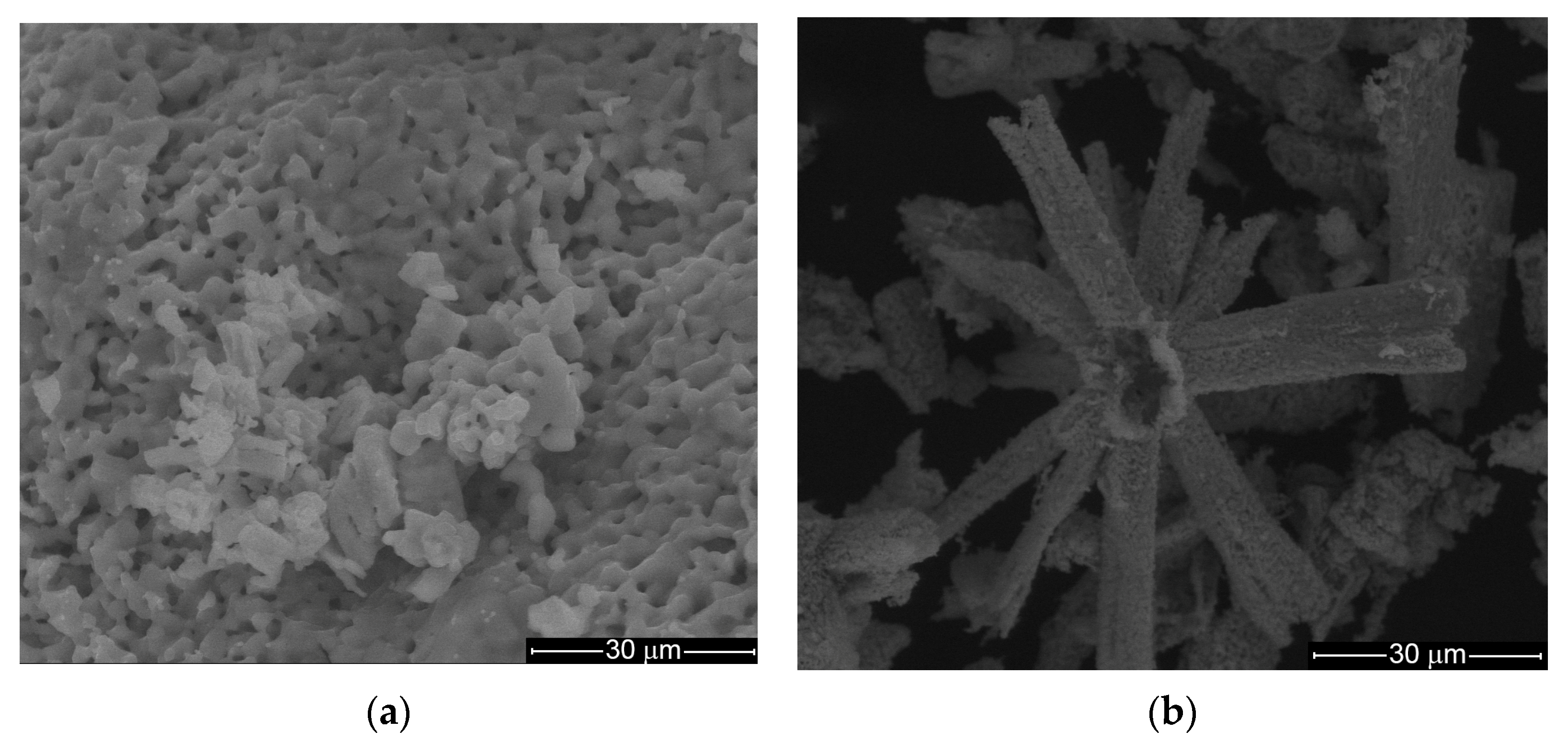
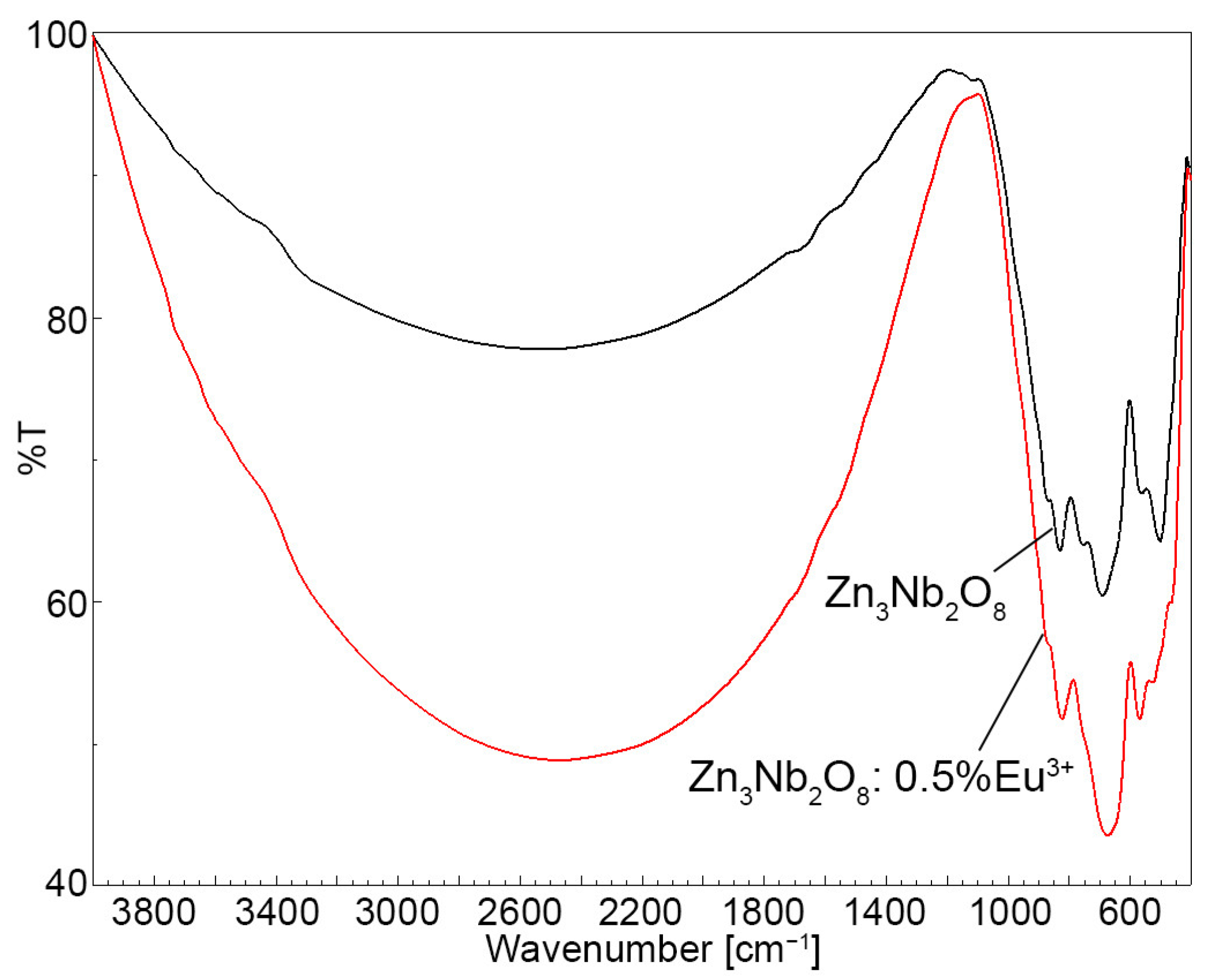
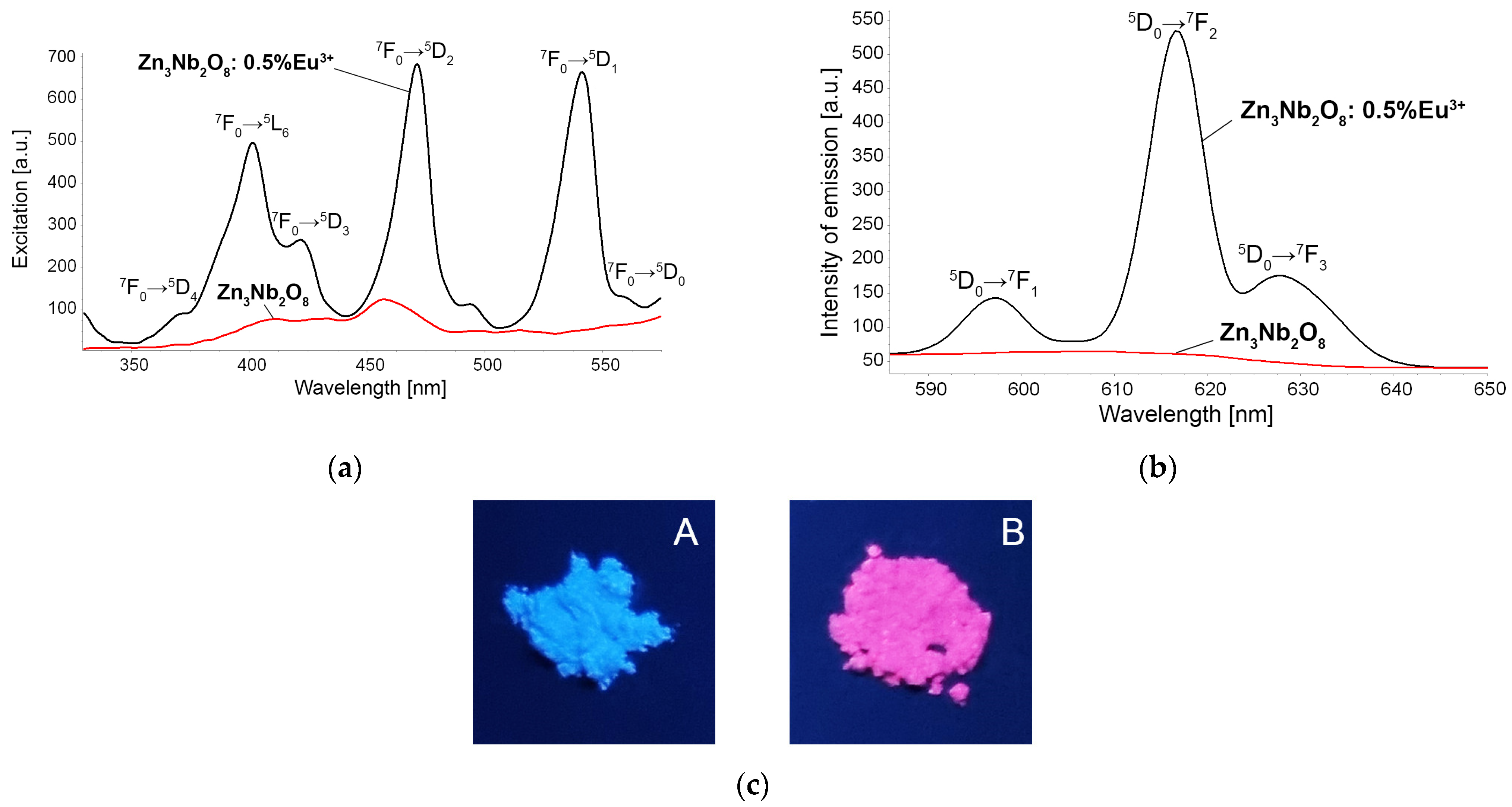

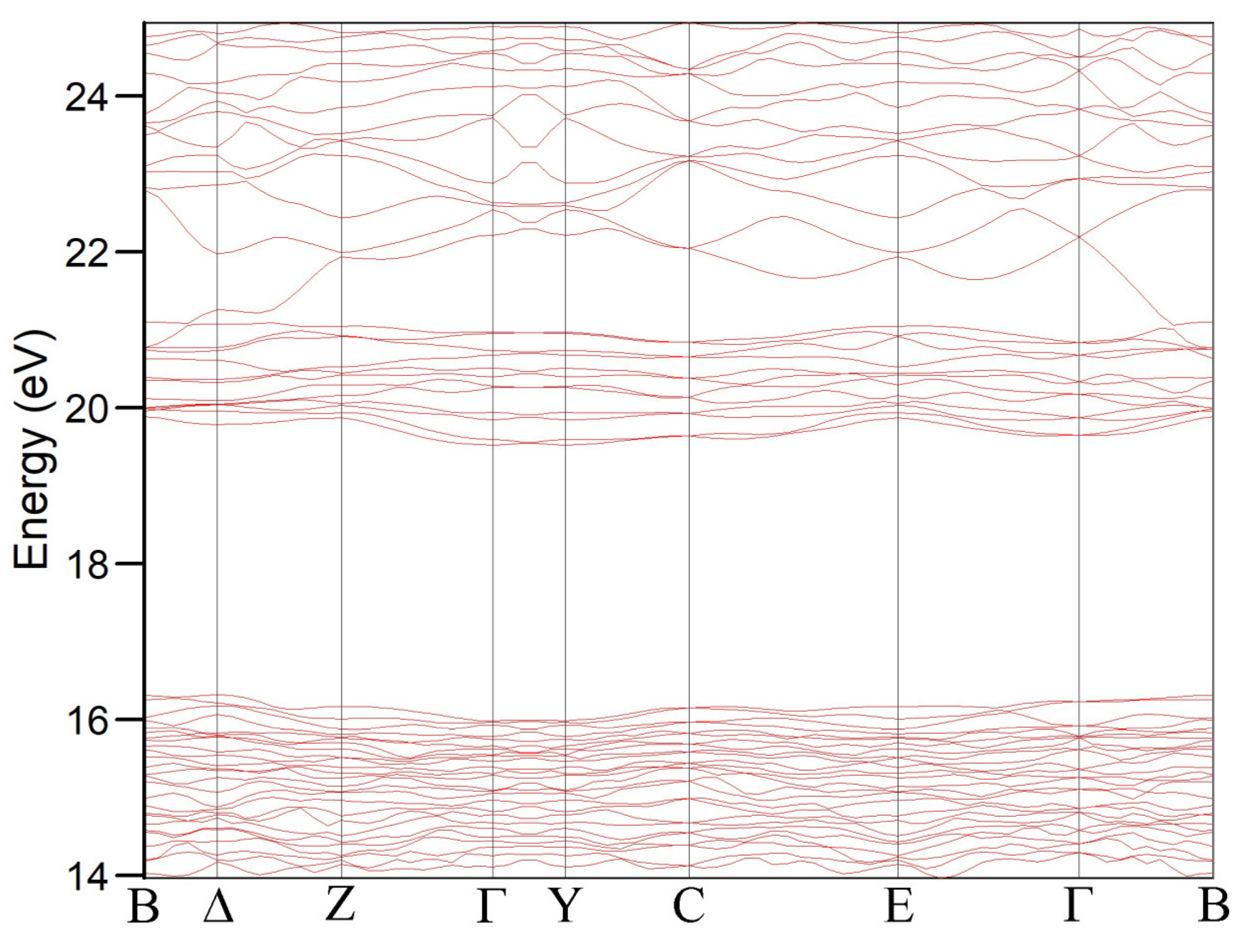
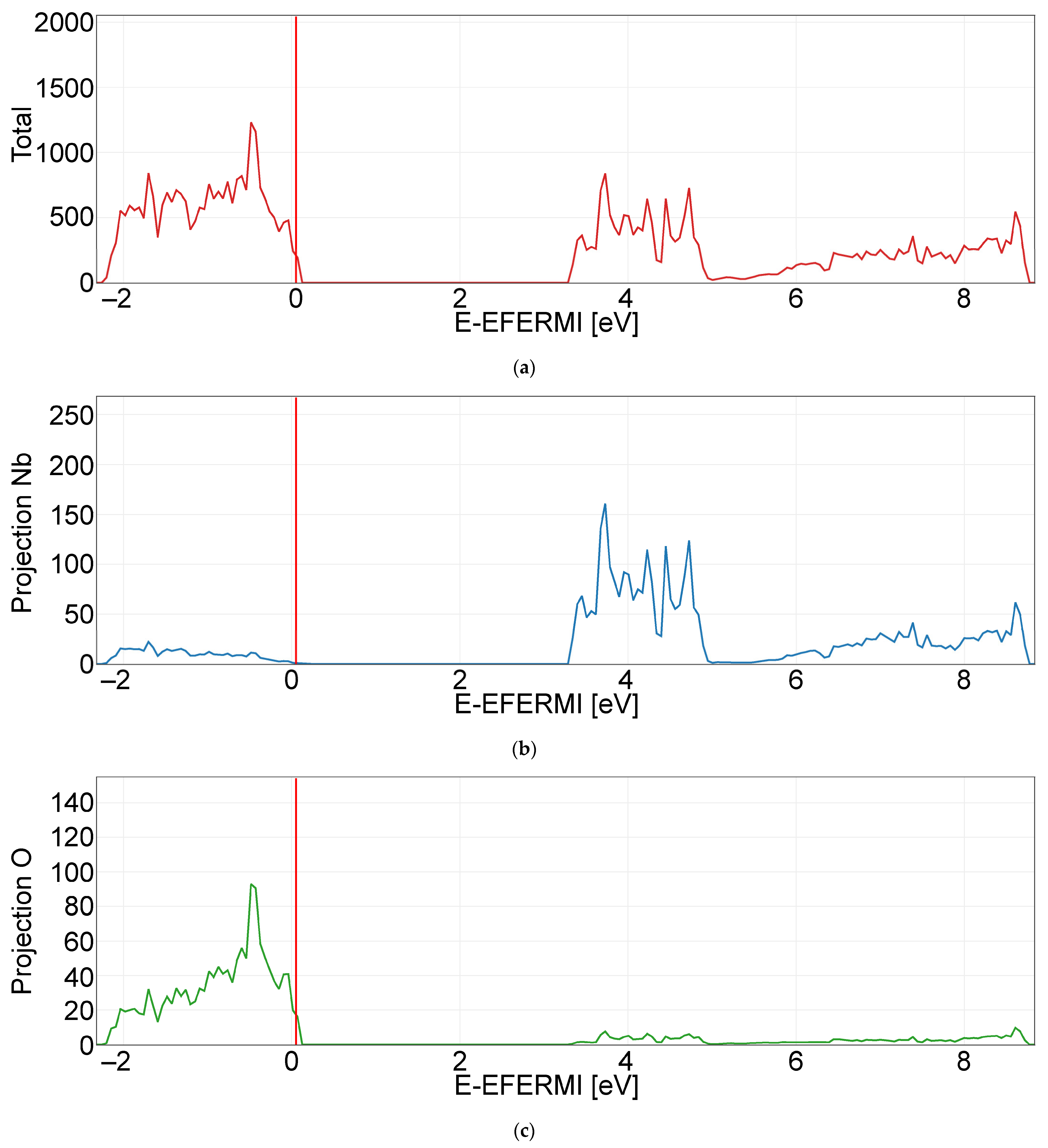
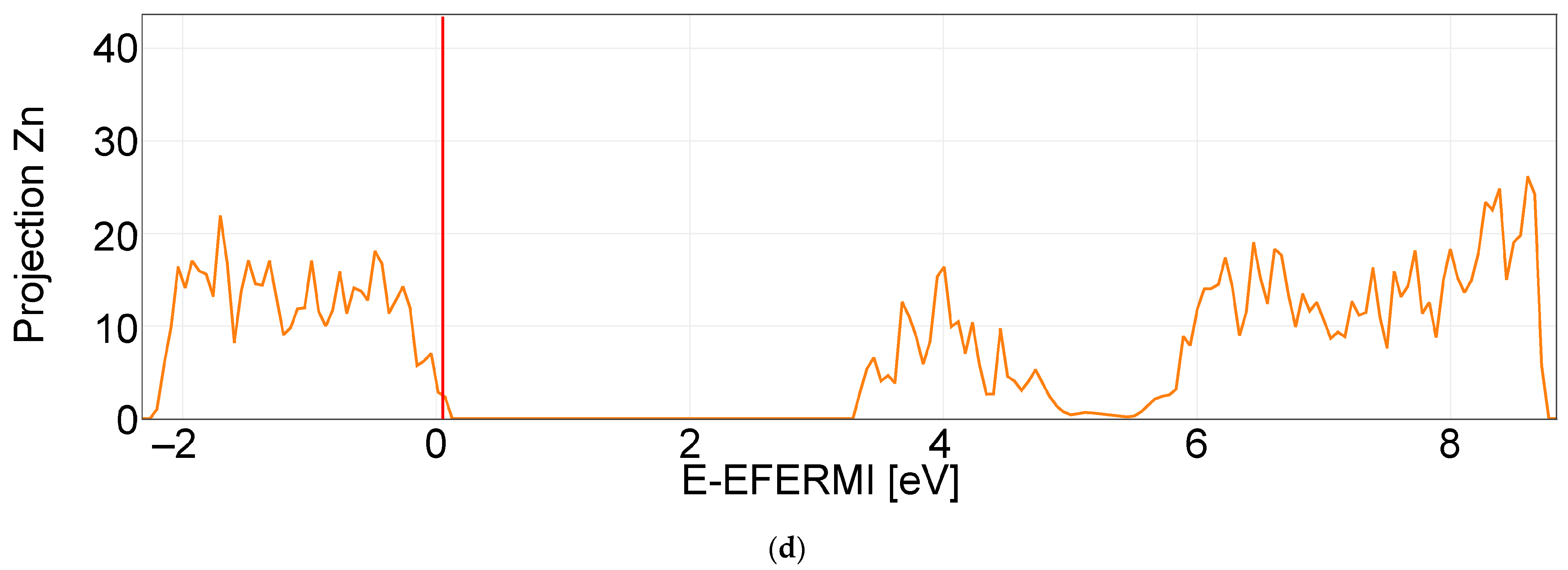

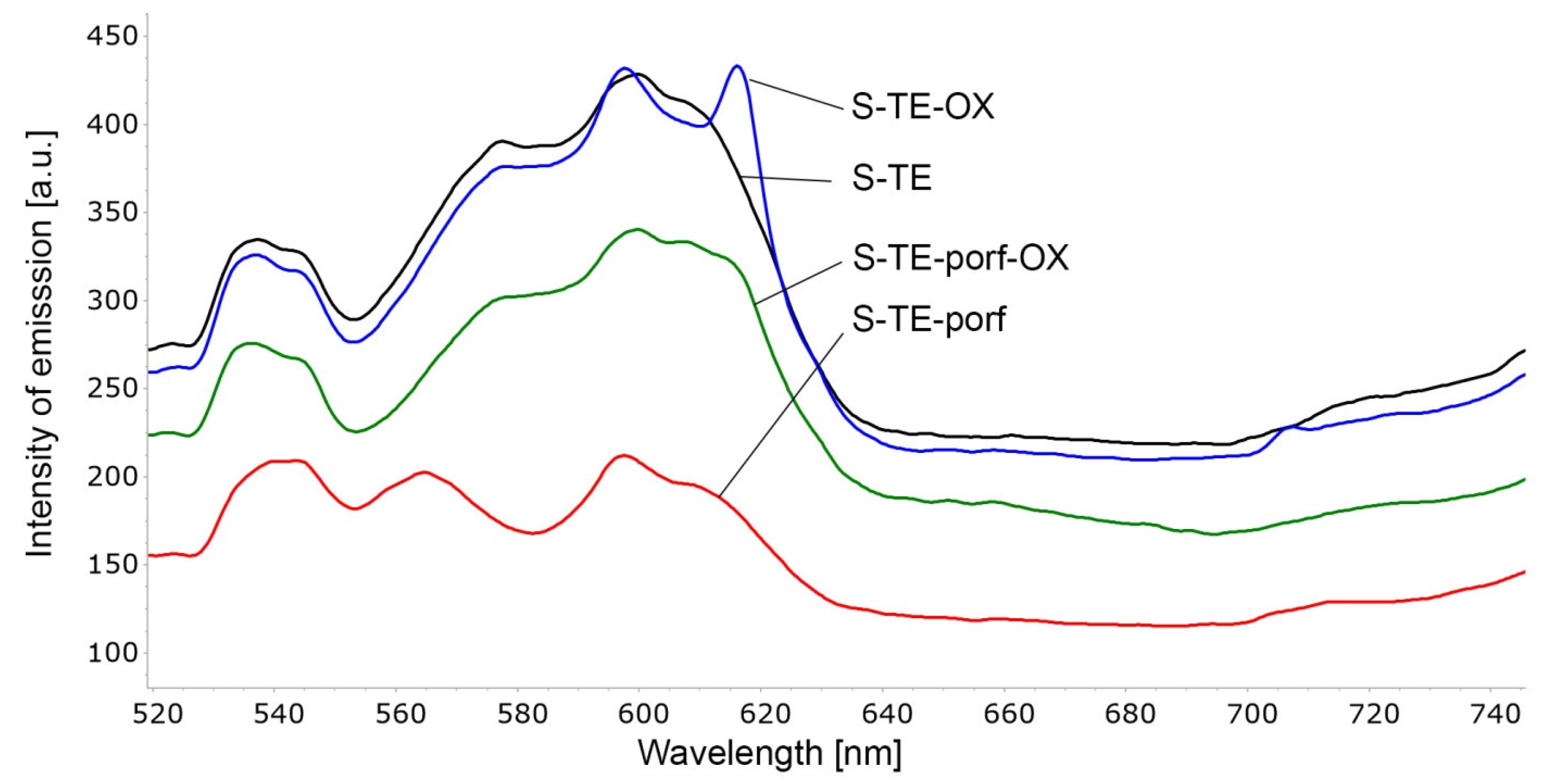
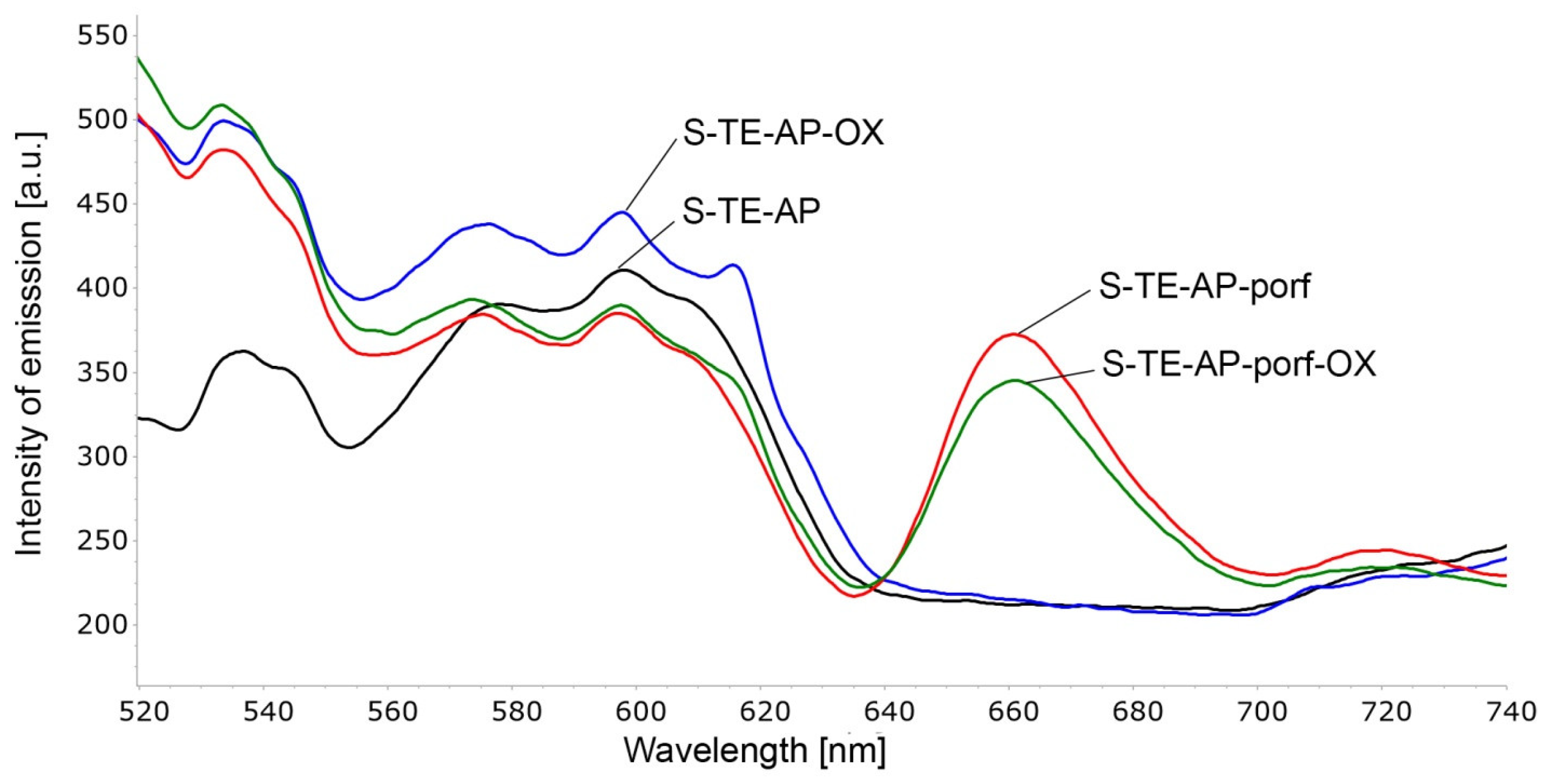


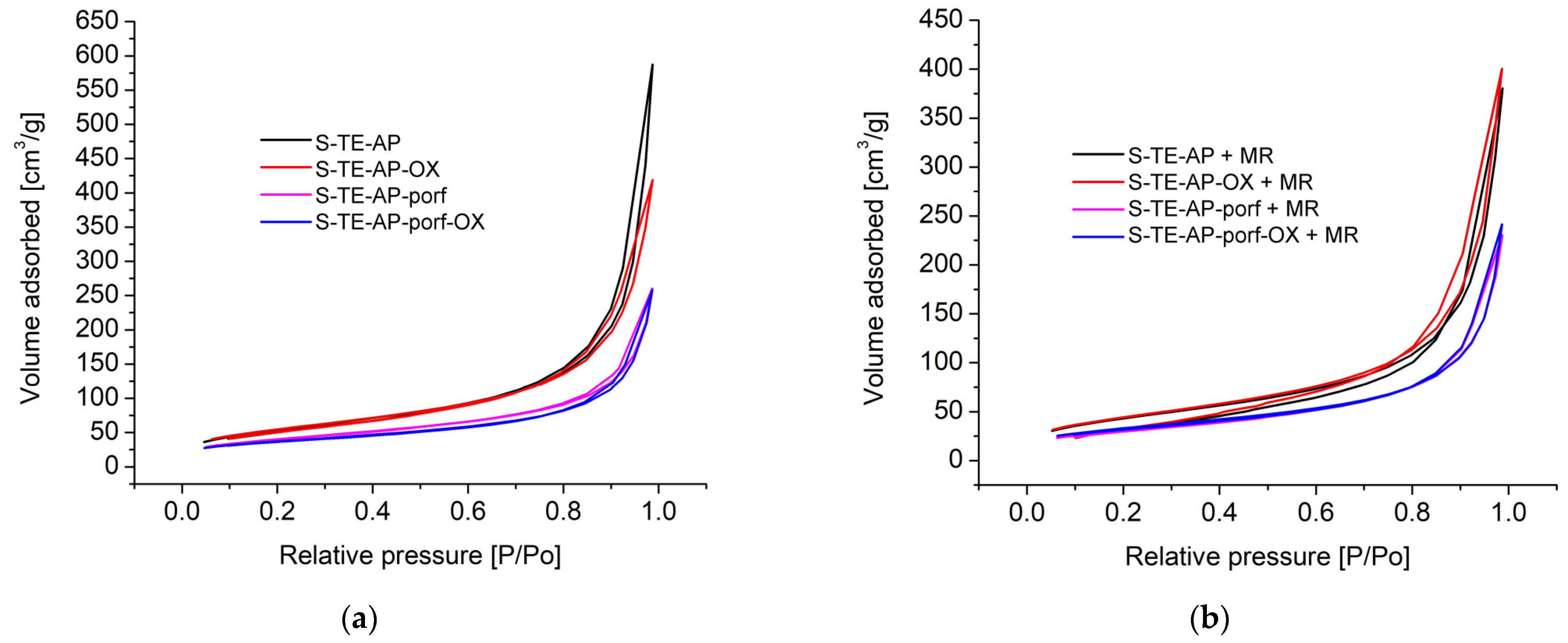
| Adsorbent Material | Removal Percentage | Adsorption Capacity [mg/g] | Conditions | Advantages | Disadvantages | Ref. |
|---|---|---|---|---|---|---|
| Bark of the Dodonaea viscosa (Hopbush) plant | 73 | 36.64 | pH = 1 75 min contact time | Inexpensive | Selective distribution of this plant in regions of Africa, the Americas, southern Asia, and Australasia Highly acidic pH | [43] |
| Nano-zero-valent iron dispersed in chitosan and sodium alginate | 68.0 | 3.38 | pH = 2 60 min exposure | - | - | [44] |
| Beads of waste foundry dust, sodium alginate, and polyethylene imine | 89.1 | 672.7 | pH = 9 3 h exposure |
| Local industry foundry | [45] |
| Activated carbon obtained from the carbonization and activation of empty raw palm oil fruit bunches | 86.72 | 2.15 | pH = 2 180 min contact time |
|
| [46] |
| Jute fibers treated with sodium carbonate | - | 32.11 | pH = 7.08 120 min contact time | Inexpensive | Local Indian plants | [47] |
| Charred Shorea robusta Saw-Dust modified with concentrated sulfuric acid or NaOH and CS2 | 70; 130 | pH = 4 3–4 h contact time | - | Tedious preparation of adsorbent material | [48] | |
| Hen feather | 92 | 6.02 | pH = 4 90 min exposure time |
| - | [49] |
| TEOS-based silica material functionalized with tetra-aminophenyl porphyrin and Zn3Nb2O8 doped with Eu3+ | 88.04 | 11.85 | pH = 5.5 120 min exposure time | No pH adjustments are necessary | - | This work |
| Nb | Zn1 | Zn2 | O1 | O2 | O3 | O4 | |
|---|---|---|---|---|---|---|---|
| Nr. electrons/ion | 10.831 | 18.818 | 18.837 | 9.037 | 9.075 | 8.943 | 8.868 |
| O1 | O2 | O3 | O4 | |
|---|---|---|---|---|
| Nb | 0.076 | 0.106 | 0.112 | 0.065 |
| Zn1 | 0.045 | 0.010 | 0.032 | 0.048 |
| Zn2 | 0.013 | 0.038 | 0.066 | 0.021 |
| R [Å] | R [Å] | ||||||
|---|---|---|---|---|---|---|---|
| Eu3+ interstitial | 1.5302 | O21 | O23 | Eu3+ substitutional | 2.0998 | O25 | O26 |
| 2.4208 | Zn5 | Zn6 | 2.1028 | O19 | O20 | ||
| 2.5392 | O26 | O28 | 2.1792 | O23 | O24 | ||
| 2.6690 | O22 | O24 | 3.4614 | O21 | O22 | ||
| 2.7072 | Nb2 | Nb4 | 3.5366 | Nb2 | Nb4 |
| Methyl Red Concentration 1 × 10−4 M | Methyl Red Concentration 1 × 10−5 M | |||
|---|---|---|---|---|
| Adsorbent Material | qe [mg\g] | R.E. [%] | qe [mg\g] | R.E. [%] |
| S-TE (control) | 5.970 | 44.34 | 1.154 | 85.74 |
| S-TE-OX | 11.550 | 85.78 | 1.191 | 88.42 |
| S-TE-porf | 8.407 | 62.43 | 1.148 | 85.29 |
| S-TE-porf-OX | 11.854 | 88.04 | 1.245 | 92.48 |
| S-TE-AP (control) | 4.131 | 30.68 | 0.900 | 66.81 |
| S-TE-AP-OX | 1.529 | 11.36 | 0.814 | 60.45 |
| S-TE-AP-porf | 0.397 | 2.95 | 0.767 | 56.98 |
| S-TE-AP-porf-OX | 0.415 | 3.08 | 0.694 | 51.51 |
| Sample Name | Specific Surface Area [m2/g] | BJH Ads, Pore Size Distribution [nm] | BJH Des, Pore Size Distribution [nm] | Average Pore Size [nm] | Total Pore Volume [cm3/g] | FHH Desorption Branch |
|---|---|---|---|---|---|---|
| S-TE | 726 | 3.068 | 3.732 | 3.064 | 0.556 for pores smaller than 171.5 nm | 2.4779 |
| S-TE-OX | 569 | 3.477 | 3.701 | 2.912 | 0.415 for pores smaller than 169.9 nm | 2.5452 |
| S-TE-porf | 674 | 3.465 | 3.721 | 3.114 | 0.525 for pores smaller than 259.5 nm | 2.5112 |
| S-TE-porf-OX | 518 | 3.461 | 3.752 | 3.167 | 0.410 for pores smaller than 158.1 nm | 2.4525 |
| Sample Name | Specific Surface Area [m2/g] | BJH Ads, Pore Size Distribution [nm] | BJH Des, Pore Size Distribution [nm] | Average Pore Size [nm] | Total Pore Volume [cm3/g] | FHH Desorption Branch |
|---|---|---|---|---|---|---|
| S-TE + MR | 706 | 3.449 | 3.731 | 3.029 | 0.535 for pores smaller than 243.0 nm | 2.5337 |
| S-TE-OX + MR | 563 | 3.459 | 3.740 | 3.341 | 0.470 for pores smaller than 157.3 nm | 2.4410 |
| S-TE-porf + MR | 696 | 3.425 | 3.751 | 3.025 | 0.527 for pores smaller than 232.4 nm | 2.5580 |
| S-TE-porf-OX + MR | 489 | 3.417 | 3.734 | 3.547 | 0.434 for pores smaller than 237.7 nm | 2.4318 |
| Sample Name | Surface Area, [m2/g] | BJH Ads, Pore Size Distribution [nm] | BJH Des, Pore Size Distribution [nm] | Average Pore Size [nm] | Total Pore Volume [cm3/g] | FHH Desorption Branch |
|---|---|---|---|---|---|---|
| S-TE-AP | 197 | 3.418 | 3.922 | 18.490 | 0.910 for pores smaller than 152.3 nm | 1.4817 |
| S-TE-AP-OX | 199 | 3.452 | 3.378 | 13.033 | 0.649 for pores smaller than 151.7 nm | 1.6392 |
| S-TEAP-porf | 145 | 3.432 | 3.930 | 11.150 | 0.403 for pores smaller than 141.6 nm | 1.7750 |
| S-TE-AP-porf-OX | 131 | 3.453 | 3.227 | 12.219 | 0.401 for pores smaller than 147.8 nm | 1.7584 |
| Sample Name | Surface Area, [m2/g] | BJH Ads, Pore Size Distribution [nm] | BJH Des, Pore Size Distribution [nm] | Average Pore Size [nm] | Total Pore Volume [cm3/g] | FHH Desorption Branch |
|---|---|---|---|---|---|---|
| S-TE-AP + MR | 157 | 3.435 | 3.246 | 15.013 | 0.590 for pores smaller than 154.1 nm | 1.5697 |
| S-TE-AP-OX + MR | 161 | 4.316 | 3.241 | 15.427 | 0.621 for pores smaller than 141.9 nm | 1.5219 |
| S-TE-AP-porf + MR | 113 | 3.436 | 3.943 | 12.638 | 0.357 for pores smaller than 146.0 nm | 1.6753 |
| S-TE-AP-porf-OX + MR | 118 | 3.838 | 3.940 | 12.701 | 0.374 for pores smaller than 143.0 nm | 1.7132 |
| No. | Silica Samples Abbreviation | Alcoxide Precursors (Molar Ratios) | HCl 37% (Moles) | TAPP Porphyrin (Moles) | Zn3Nb2O8 Doped with 0.5% Eu3+ (1% Reported to Alcoxide) | NH3 2.5% (mol) Used Till Gelation |
|---|---|---|---|---|---|---|
| 1 | S-TE (control) | TEOS (1:1)-0.05 mole | 0.001 | - | - | 0.00164 |
| 2 | S-TE-OX | - | 0.104 g | 0.00203 | ||
| 3 | S-TE-porf | 5 × 10−6 | - | 0.00174 | ||
| 4 | S-TE-porf-OX | 5 × 10−6 | 0.104 g | 0.00247 | ||
| 5 | S-TE-AP (control) | TEOS/APTMOS (9:1)-0.045:0.005 mole | 0.001 | - | - | - |
| 6 | S-TE-AP-OX | - | 0.104 g | - | ||
| 7 | S-TE-AP-porf | 5 × 10−6 | - | 0.0025 | ||
| 8 | S-TE-AP-porf-OX | 5 × 10−6 | 0.104 g | 0.0025 |
Disclaimer/Publisher’s Note: The statements, opinions and data contained in all publications are solely those of the individual author(s) and contributor(s) and not of MDPI and/or the editor(s). MDPI and/or the editor(s) disclaim responsibility for any injury to people or property resulting from any ideas, methods, instructions or products referred to in the content. |
© 2023 by the authors. Licensee MDPI, Basel, Switzerland. This article is an open access article distributed under the terms and conditions of the Creative Commons Attribution (CC BY) license (https://creativecommons.org/licenses/by/4.0/).
Share and Cite
Birdeanu, M.; Fratilescu, I.; Epuran, C.; Mocanu, L.; Ianasi, C.; Lascu, A.; Fagadar-Cosma, E. Nanomaterials Based on Collaboration with Multiple Partners: Zn3Nb2O8 Doped with Eu3+ and/or Amino Substituted Porphyrin Incorporated in Silica Matrices for the Discoloration of Methyl Red. Int. J. Mol. Sci. 2023, 24, 8920. https://doi.org/10.3390/ijms24108920
Birdeanu M, Fratilescu I, Epuran C, Mocanu L, Ianasi C, Lascu A, Fagadar-Cosma E. Nanomaterials Based on Collaboration with Multiple Partners: Zn3Nb2O8 Doped with Eu3+ and/or Amino Substituted Porphyrin Incorporated in Silica Matrices for the Discoloration of Methyl Red. International Journal of Molecular Sciences. 2023; 24(10):8920. https://doi.org/10.3390/ijms24108920
Chicago/Turabian StyleBirdeanu, Mihaela, Ion Fratilescu, Camelia Epuran, Liviu Mocanu, Catalin Ianasi, Anca Lascu, and Eugenia Fagadar-Cosma. 2023. "Nanomaterials Based on Collaboration with Multiple Partners: Zn3Nb2O8 Doped with Eu3+ and/or Amino Substituted Porphyrin Incorporated in Silica Matrices for the Discoloration of Methyl Red" International Journal of Molecular Sciences 24, no. 10: 8920. https://doi.org/10.3390/ijms24108920
APA StyleBirdeanu, M., Fratilescu, I., Epuran, C., Mocanu, L., Ianasi, C., Lascu, A., & Fagadar-Cosma, E. (2023). Nanomaterials Based on Collaboration with Multiple Partners: Zn3Nb2O8 Doped with Eu3+ and/or Amino Substituted Porphyrin Incorporated in Silica Matrices for the Discoloration of Methyl Red. International Journal of Molecular Sciences, 24(10), 8920. https://doi.org/10.3390/ijms24108920









